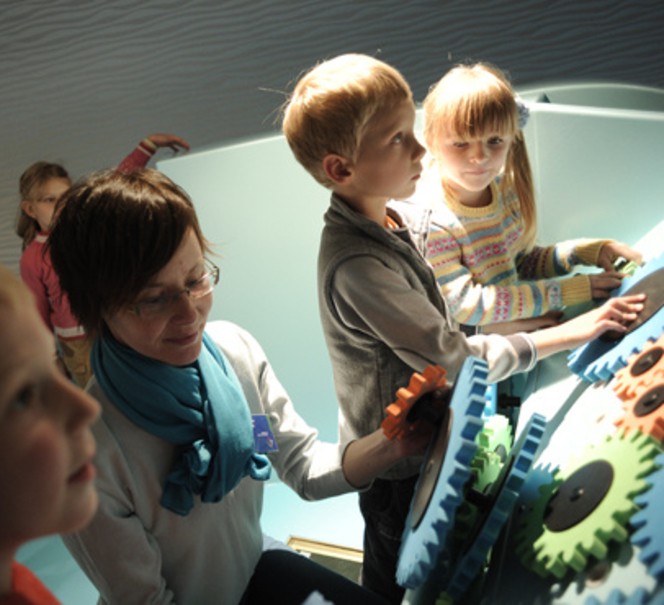A teacher, while visiting Copernicus, asked one of our explainers a difficult question: "Excuse me, sir, when does the recess end here?" The question, although surprising, is quite natural and requires an answer that will treat the doubts expressed by many visitors – not only teachers, but also parents and educators – seriously and with respect.
Accustomed to the structured and hierarchically organised school space, among the hustle and bustle that fills the Copernicus Science Centre, we fail to see opportunities for learning in the form that we are used to... So? When does the "recess" end in Copernicus? The correct answer is… never! And it is – like every paradox – an introduction to a deeper reflection on the purpose of the existence of science centres in general.
Teaching in various ways
This paradox comes from us being accustomed to traditional methods of teaching which we know from school. But learning looks differently in Copernicus.
One example of this is the Cosmic Dumpster exhibit from the World in Motion gallery. It seems to be an arcade game for younger visitors, attractive due to its graphics and advanced technical controls. Meanwhile, this exhibit effectively teaches Newton's laws of motion and does it in a very deep and lasting way.
Although there are no tables with formulas or definitions anywhere around the exhibit, the laws of physics were introduced into the game computer. While playing, visitors must quickly develop an appropriate intuition regarding the progressive movement, the relationship between force and acceleration, and the rules of action and reaction, otherwise they will not be able to achieve even the smallest success in the game!
Where is knowledge stored?
Where does the knowledge that our Visitors acquire go? When asked, they will probably be unable to recite a textbook formula... However, their kinetic memory has saved a set of intuitions and reflexes, which will be instantly recalled when needed. Often even subconsciously!
After all, there is no way of learning more permanent than connecting facts with our bodily reflexes. Other exhibits in the Centre work similarly – they tie scientific knowledge (e.g. the laws of physics) with deep movement sensations, using what is professionally called the kinaesthetic (or motor) memory.
Thinking of the youngest...
Children especially learn to see the world through their whole body movement, and recreating situations in which they encountered a certain phenomenon. This can rarely be used at school where one usually sits still at a desk. A visit to the Centre is therefore a perfect extension and completion of school practice.
But the motor memory is only the beginning of the fascinating adventure with Copernicus! An informed design of the rooms, spacing of the exhibits, usage of sounds, colour, textures – these are all means which are made to connect an observation or a natural phenomenon with a strong sensual association, which will cause the educational substance to register in memory more permanently than if it was only told.
...as well as adults!
However, it would be wrong to say that the Centre is just one big playground for children. The educational space for teenagers and adults is very extensive in Copernicus. Many of the exhibits are constructed in layers – in the first, superficial perception, they are simple tools for play, referring to school education, but placed in the right context, they immediately acquire cognitive value for a more mature recipient.
This is not only true regarding RE: generation, a gallery which actually has an age limit for entry, but also in case of a wide variety of exhibits from exhibitions such as Roots of Civilisation, Light Zone, or Human and Environment. Thanks to articles collected in the Guide, also the older Visitors can expand their knowledge in different subject areas. Not only the child profits, but also the parent or guardian.

